Firefly Petunia
Introducing the world’s first naturally glowing plant! The Firefly Petunia emits a soft, bioluminescent glow at night, making it a mesmerizing addition to any home or garden.
- Glows in the dark naturally – no blacklight needed! 🌌
- Perfect for night gardens & patios. 🌿
- Thrives in pots, hanging baskets, and garden beds or bring indoors as a houseplant! 🏡
- Times Magazine - The Best Inventions of 2024 List ☀️
- Limited supply – secure yours today! 🛒
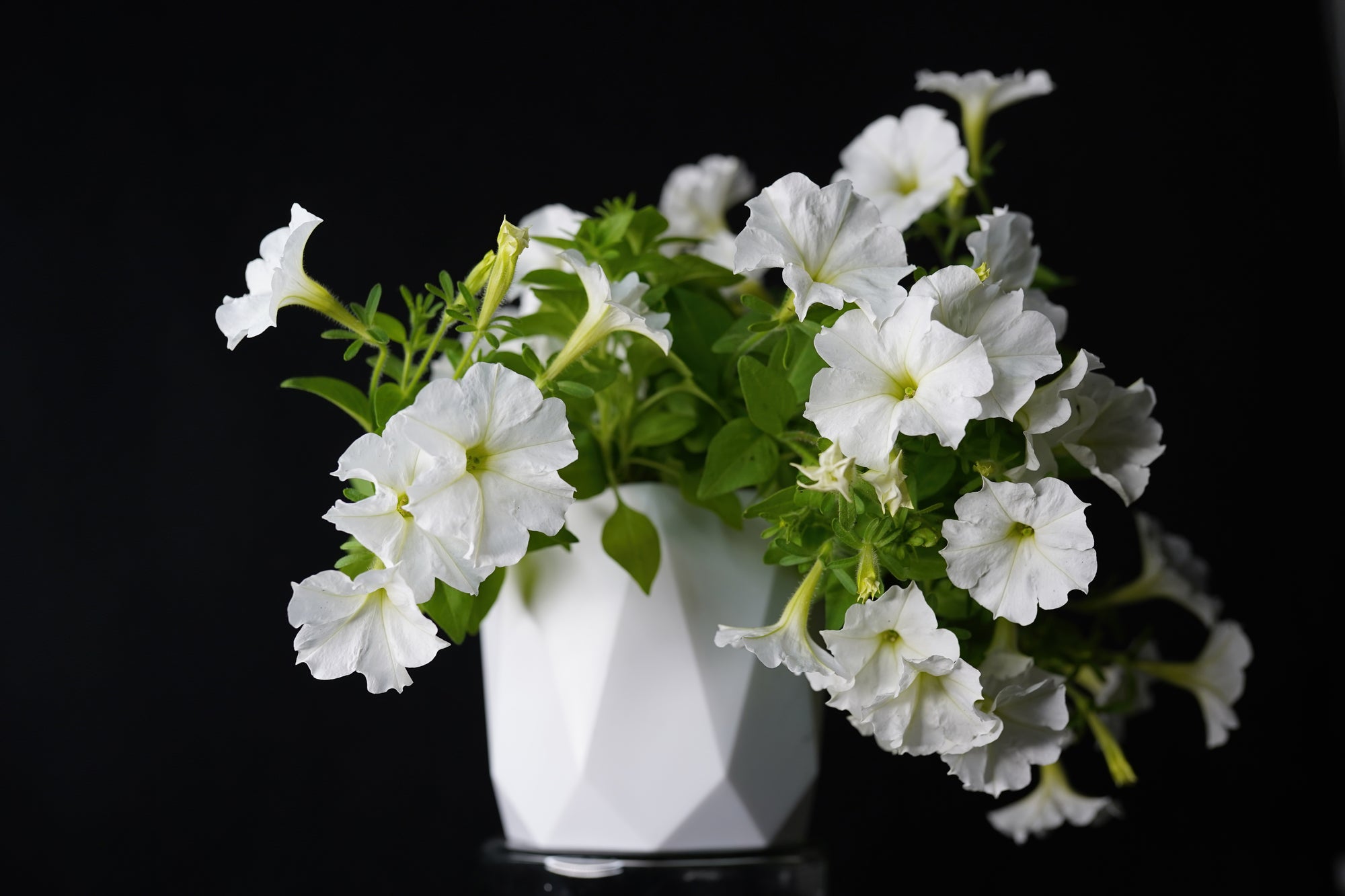
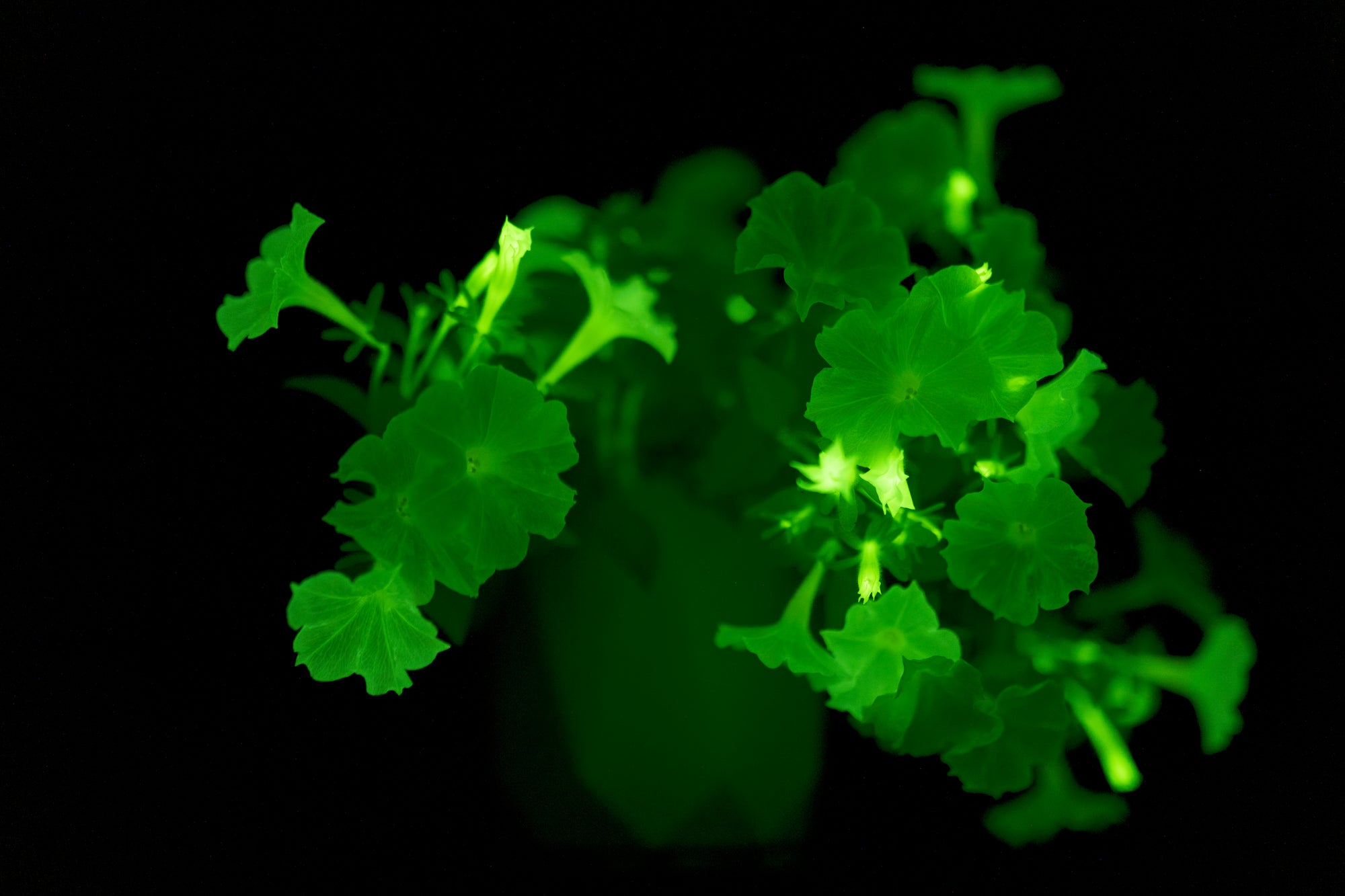
What People Are Saying
How the Firefly Petunia Works
The Firefly Petunia is the world’s first naturally glowing plant, blending nature with cutting-edge biotechnology. Here’s how it works:
- 💡 Bioluminescent Genes: The petunia contains genes from naturally glowing mushrooms.
- 🌱 Glowing New Growth: Fresh leaves, stems, and flowers emit the brightest glow.
- 🌙 Nighttime Magic: The plant naturally glows in low-light conditions, requiring no blacklight.
- 🔄 Self-Sustaining: The glow is continuous and does not fade over time.
The Science Behind the Glow
The Firefly Petunia was created using bioluminescent genes from the Neonothopanus nambi mushroom. Scientists at Light Bio incorporated these genes into the petunia to enable continuous bioluminescence.
- 🧬 Enzyme Reaction: The plant converts a natural compound, luciferin, into light using an enzyme called luciferase.
- 💚 Green Glow: The chemical reaction produces a soft, green luminescence.
- 🌿 Photosynthesis Powered: The plant generates all the necessary energy to sustain its glow through normal growth.
- ⚡ Future Potential: Scientists are exploring ways to make future plants glow even brighter and in different colors.
Firefly Petunia FAQ
💡 Glowing & Bioluminescence
Firefly Petunias are identical to conventional petunias, except they emit bioluminescence like fireflies. No special treatments or conditions are required.
The luminescence of Firefly Petunias is best experienced in a dark room or on a moonless night.
Our petunias emit a soothing glow that is similar to moonlight. New flower buds are the brightest part of the plant.
The brightness of the plant is determined by natural cycles of its growth. During the day, the plant harvests energy from the sun, which it uses at night to glow. The bioluminescence is best observed after twilight.
The fastest growing parts of the plant will glow most brightly. Light is emitted primarily by the flowers, with the youngest ones glowing brightest. As flowers mature, their luminescence diminishes.
A loss of glow may indicate stress or poor health. Try these steps:
Yes, they are. Firefly Petunias gently glow thanks to a genetic recipe for bioluminescence derived from tropical mushrooms. These mushrooms are found in forests worldwide, and mechanism of their bioluminescence is one of the most well-understood. Bioluminescence of Firefly Petunias was achieved by the careful transfer of five fungal genes, which were configured to convert a small fraction of the plant's energy into light without disrupting its healthy physiology.
Firefly Petunias do not cross-pollinate with native North American plants. It is also unlikely to have any noticeable impact on wildlife. Its soft, moonlight-like glow is far dimmer than the artificial lighting commonly used in homes and gardens. Additionally, the bioluminescent components are not known to be toxic to pollinators, including bees.
These plants have undergone rigorous regulatory review and have been approved by the USDA in 2023. The USDA found no plausible pathway by which the Firefly Petunia poses an increased plant pest risk compared to unmodified petunias. After analyzing its biology, traits, and potential impacts on plant health, pests, non-target organisms, and weediness, the USDA concluded that the Firefly Petunia is unlikely to pose increased risks.
Like all plants, Firefly Petunias thrive with sunlight, water, and soil. Their bioluminescence is encoded in their DNA, requiring no special treatment to glow—just good health and sufficient energy.
🚚 Shipping & Delivery
Firefly Petunias are shipped exclusively within the USA, as they are not regulated by the USDA as genetically modified plants. Other countries may have importation and usage restrictions
Shipping can be stressful for live plants. Upon arrival:
The Firefly Petunia is shipped as a small plant rooted in a 4” pot. As flowers tend to suffer in shipment, the petunia will arrive with developing buds. It may contain a few newly opened flowers. With good growing conditions, it will quickly attain about 8 to 10 inches in size with abundant white flowers.
🌱 Growing & Care
Yes! Firefly Petunias thrive indoors if placed in direct sunlight. A south-facing window or full-spectrum grow light works best. During winter months, expect slower growth and fewer flowers due to shorter days.
Water when the top inch of soil feels dry to the touch. The soil should be moist but not soggy. Avoid overwatering, as standing water can harm the roots.
These plants flourish with 6 to 12 hours of direct sunlight daily. While they can tolerate partial shade, reduced sunlight may diminish their bioluminescent effect.
They thrive in 65-75°F (18-24°C) temperatures. Avoid drafts or placing them near heating vents, as extreme temperature changes can stress the plant.
As heavy feeders, Firefly Petunias benefit from balanced, water-soluble fertilizer applications every 1 to 2 weeks during the growing season. Incorporating chelated iron and micronutrients like manganese, zinc, and copper can promote vibrant foliage.
While self-cleaning and not requiring deadheading to continue blooming, occasional pruning can shape the plant and encourage bushier growth, especially if it becomes leggy.
While Firefly Petunias are non-toxic, they are not intended for consumption. Keep them out of reach of young children and pets to avoid accidental ingestion.
Common pests include aphids, whiteflies, and spider mites. Regularly inspect your plants to detect and manage infestations early.
To minimize fungal issues, ensure good air circulation around the plants and avoid overhead watering, as overly wet or humid conditions can promote fungal growth.
Our Firefly Petunias are protected under patent, and as such, propagation and breeding are not permitted. These petunias are sold exclusively for personal use.
What You'll Receive
See what arrives at your doorstep! Below showcases the Firefly Petunia, carefully packaged and ready to glow. 🌱✨
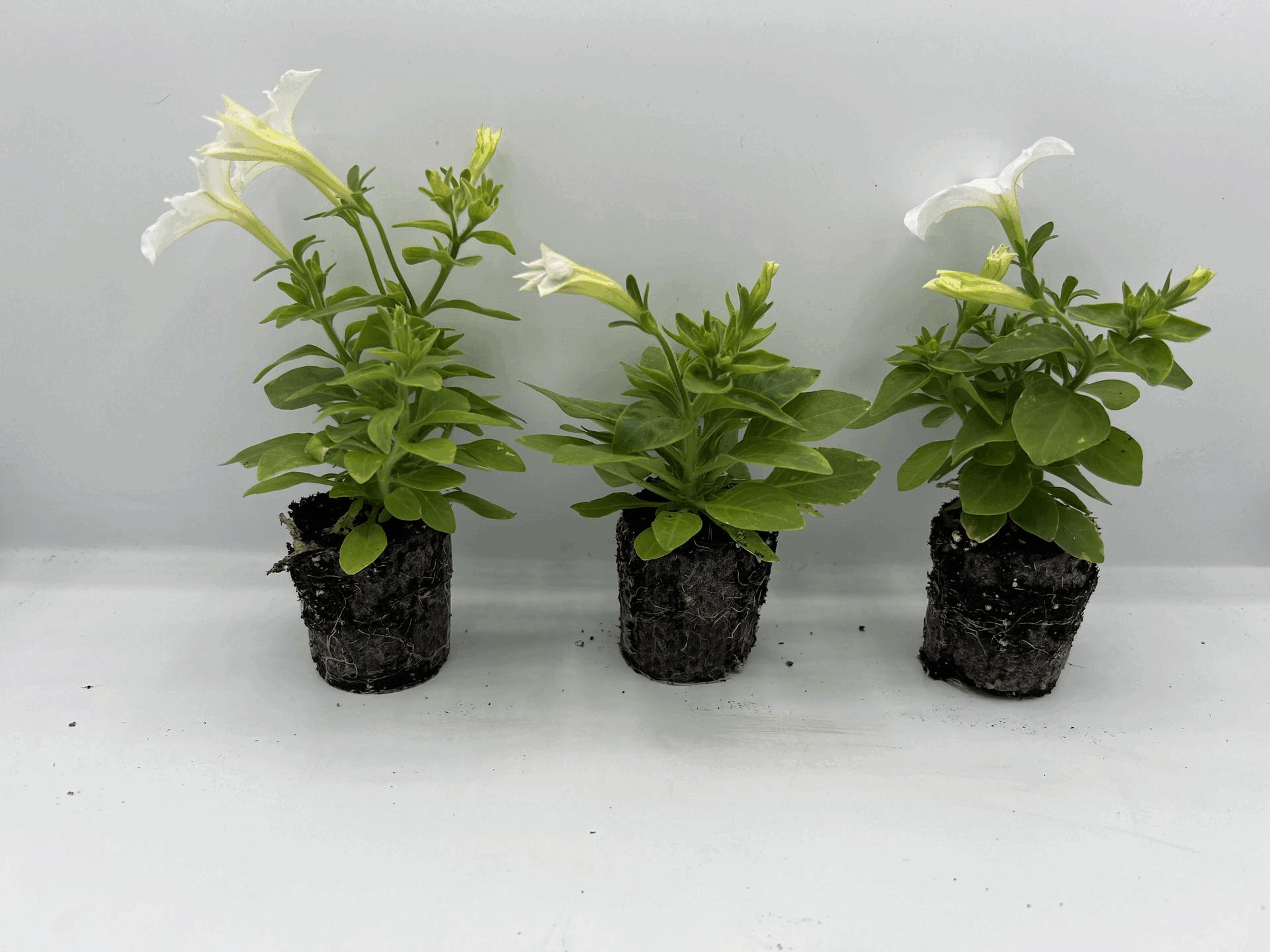
See the Firefly Petunia in Action!
Firefly Petunia Information
|
USDA Hardiness Zones: 3 - 9 (Annual) | 10 - 11 (Perennial) |
| Plant Type: Annual (Use as a Houseplant too!) |
| Light Exposure: Full Sun (At Least 6 Hours of Direct Sunlight) |
| Mature Height: 8 - 10 Inches |
| Mature Spread: 12 - 18 Inches |
| Spacing: 6 - 10 Inches |
| Habit: Mounded, Trailing |
| Flower Color(s): White |
| Flower Description: White |
| Bloom Period: Planting to Frost |
| Foliage Type: Herbaceous |
| Foliage Color(s): Green |
| Foliage Description: Medium Green |
| Seasonal Interest: Spring Flowering, Summer Flowering |
| Watering: Average |
| Resists: Insects |
| Tolerates: Heat |
| Attracts: Hummingbirds |
| Container Role: Spiller |
| Uses: Containers, Hanging Baskets, Garden Beds |
| Features: Low Maintenance |
| Brand: Light Bio |
| Common Name: |
| Other Name(s): |
| Scientific Name: Petunia x hybrida |
- SKU:
- GLOWFF
Please Note: The pictures below are to give a general representation of the different container sizes. The actual size/ages of plants are estimates and will vary based on type of plant, time of year, last pruning & many other factors.
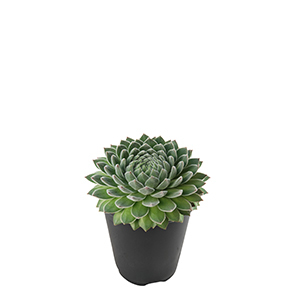
Also Known As:
3.5" Container
Plant Age:
~ 6 months
Plant Size:
~ 3"-6"
Pot Size:
~ 4.5"H x 3.75"W
Volume:
~1.42 quarts
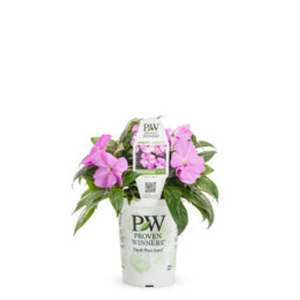
Also Known As:
4.25" Container
Plant Age:
~ 6 months
Plant Size:
~ 3"-6"
Pot Size:
~ 4.93"H x 4.25"W
Volume:
~1.56 pints
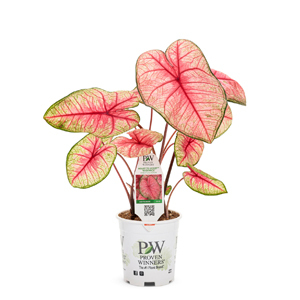
Also Known As:
Quart
Plant Age:
~ 6 months - 1 year
Plant Size:
~ 4"-8"
Pot Size:
~ 4.75"H x 4.5"W
Volume:
~1.50 quarts
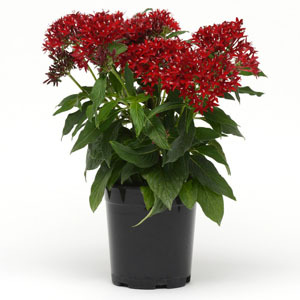
Also Known As:
#1 Container
1 Gallon
Plant Age:
~ 1 - 2 years old
Plant Size:
~ 10"-14"
Pot Size:
~ 7"H x 7.75"W
Volume:
~2.26-3.73 quarts

We stand behind our plants with industry-leading guarantees to give you peace of mind.
We want your plants to arrive in great condition! If you notice any issues upon delivery, contact us within 3 days.
For annuals, houseplants & vegetables, we provide a 30-day warranty to ensure that your plants thrive.

Pre-ordered plants are scheduled to ship in Spring 2025. We carefully plan our shipping dates based on your USDA Plant Hardiness Zone to ensure optimal planting conditions upon arrival. Want it sooner/later? Reach out, and we'll try our best to accommodate.
Estimated ship week for pre-ordered plants will ship based on growing zones as shown below.
| Growing Zone | Estimated Ship Week |
|---|---|
| Zone 10 | March 24th |
| Zone 9 | March 31st |
| Zone 8 | April 7th |
| Zone 7 | April 14th |
| Zone 6b | April 21st |
| Zone 6a | April 28th |
| Zone 5b | May 5th |
| Zone 5a | May 12th |
| Zone 4 | May 19th |
| Zone 3 | May 26th |
Note: These are only estimated ship dates. Plants may ship out later depending on weather & growing conditions of the plant.
Note: Only plants indicated as pre-order will ship as shown above. All other plants and hard goods will ship as normal.
Plants that are currently in stock typically ship within 2-7 business days after your order is placed.





















